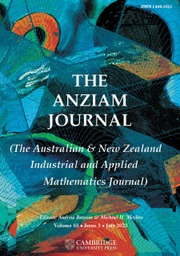Article contents
OPTION PRICING UNDER THE KOBOL MODEL
Published online by Cambridge University Press: 12 September 2018
Abstract
We consider the pricing of European options under a modified Black–Scholes equation having fractional derivatives in the “spatial” (price) variable. To be specific, the underlying price is assumed to follow a geometric Koponen–Boyarchenko–Levendorski process. This pure jump Lévy process could better capture the real behaviour of market data. Despite many difficulties caused by the “globalness” of the fractional derivatives, we derive an explicit closed-form analytical solution by solving the fractional partial differential equation analytically, using the Fourier transform technique. Based on the newly derived formula, we also examine, in theory, many basic properties of the option price under the current model. On the other hand, for practical purposes, we impose a reliable implementation method for the current formula so that it can be easily used in the trading market. With the numerical results, the impact of different parameters on the option price are also investigated.
MSC classification
- Type
- Research Article
- Information
- Copyright
- © 2018 Australian Mathematical Society
References
- 1
- Cited by




